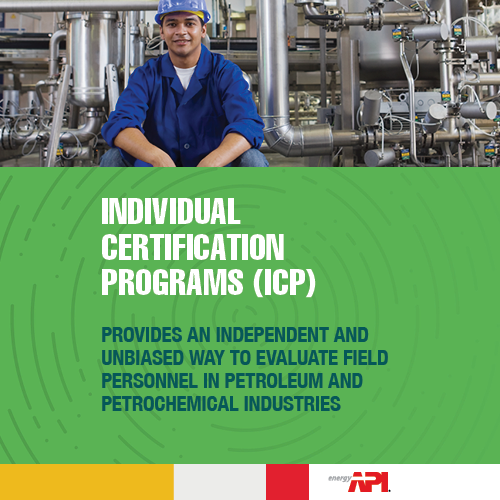Introduction
Welcome to the Risk Based Inspection (RBI) unit of the Mechanical Integrity Professional Initiative. Inside this unit, you will learn about the core mechanics and principles of RBI and how it can be used to prioritize a facility’s inspection planning.
The information in this unit is primarily found in API RP 580, Risk Based Inspection (Third Edition). In fact, this unit may certainly be used as a study reference for those who are interested in obtaining the API 580 certification. While it is not a replacement for detailed training or the Recommended Practice itself, it may provide additional context to help understand and make use of the API 580 body of knowledge.
Introduction to RBI
Facilities have limited resources (e.g., manpower, budget, etc.) to devote to their inspection and mitigation efforts. As an extreme example, a facility cannot afford to inspect 100% of their equipment every single day. Because of this, they must use a systematic process to prioritize their efforts.
Facilities may develop inspection plans based on predetermined inspection intervals (e.g., storage tanks shall be inspected every 10 years). This concept is known as time-based inspection – time is the primary variable from which inspection efforts are derived.
On the other hand, risk-based inspection factors in the concept of risk to prioritize inspection planning and other MI related activities. If a component has a higher risk of loss of containment that may lead to catastrophic consequences than another component, RBI accounts for this risk. A robust RBI program identifies risk drivers, enabling the user to understand, identify, and manage risks associated with mechanical integrity in a fair, systematic, consistent, credible, and timely fashion.
Relationship Between RBI and Inspection Codes
A facility’s usage of RBI is subject to the requirements and limitations of other applicable inspection codes such as API 510, API 570, and API 653, as well as jurisdictional requirements that may exist. For example:
- API 510 Pressure Vessel Inspection Code (Tenth Edition) states that “when an owner/user chooses to conduct a RBI assessment, it shall include a systematic evaluation of both the probability of failure and the consequence of failure in accordance with API 580.”
- API 570 Piping Inspection Code (Fourth Edition) similarly states that “when the owner/user chooses to conduct an RBI assessment it shall include a systematic evaluation of both the probability and the associated consequence of failure, in accordance with the requirements in API 580.”
- API 653 Tank Inspection, Repair, Alteration, and Reconstruction (Fifth Edition) says “an owner/operator can establish the subsequent internal inspection interval using risk based inspection (RBI) procedures in accordance with API RP 580 and the additional requirements of this section.”
In summary, each of these inspection codes provides facilities the opportunity to use RBI as a basis for inspection planning as long as they follow a recognized and generally accepted RBI framework; in this case, API RP 580)
Applicability of RBI
According to API RP 580, RBI is primarily focused on:
- maintaining the mechanical integrity of pressure equipment items, and
- minimizing the risks associated with of loss of containment due to deterioration.
In other words, RBI is used to minimize loss of containment of fixed equipment due to degradation. It is not a comprehensive or all-encompassing framework and should not be used as a substitute for other vital risk assessments such as process hazards analyses (PHAs) or hazard and operability assessments (HAZOPs).
RBI covers the following types of equipment and their associated components:
- Pressure vessels (including all pressure-containing components)
- Process piping (including pipe and piping components)
- Storage tanks (both atmospheric and pressurized)
- Rotating equipment (only pressure-containing components)
- Boilers and heaters (only pressurized components)
- Heat exchangers (shells, floating heads, channels, and bundles)
- Pressure-relief devices
RBI does not cover instrument and control systems, electrical systems, structural systems, or most machinery components.
















